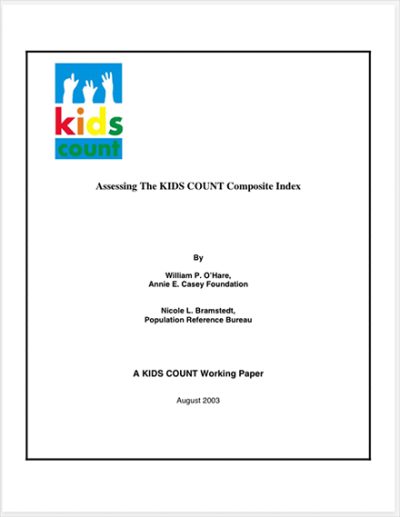Summary
Each year since 1990, the Annie E. Casey Foundation has released a KIDS COUNT® Data Book, which assesses child well-being in each state based on 10 key statistical indicators.
Study Scope
This study compares the performance of a 10-indicator KIDS COUNT Index of child well-being to a 28-indicator index (FCD-Land) and a 36-item index (America’s Children).
These comparisons can help inform the development of new indicators and indices of child well-being, including the early-stage efforts to generate a global measure of child well-being.
Study Findings
While the KIDS COUNT, FCD-Land and America’s Children indices all registered improvement in child well-being, the size of the improvements differed. From 1990 to 2000, the KIDS COUNT Index showed a 14% improvement in child well-being compared to 7% for the FCD-Land Index. Between 1995 and 2000, the KIDS COUNT Index showed a 12% improvement compared to 9% for the America’s Children Index and 8% for the FCD-Land Index.
Determining which indicators are responsible for the differences among the three indices fell beyond the scope of this study. However, the report’s authors note that the FCD-Land and America’s Children indices included more dimensions of well-being, which led to differences in these indices versus the 10-item KIDS COUNT Index.
Despite these differences, researchers found enough similarities between the KIDS COUNT and the broader indices to suggest that the 10-item KIDS COUNT Index reflects the most important dimensions of child well-being.
About the Series
This publication is part of the KIDS COUNT Working Paper series, which elevates discussions about data gaps, results and trends related to the KIDS COUNT database.







